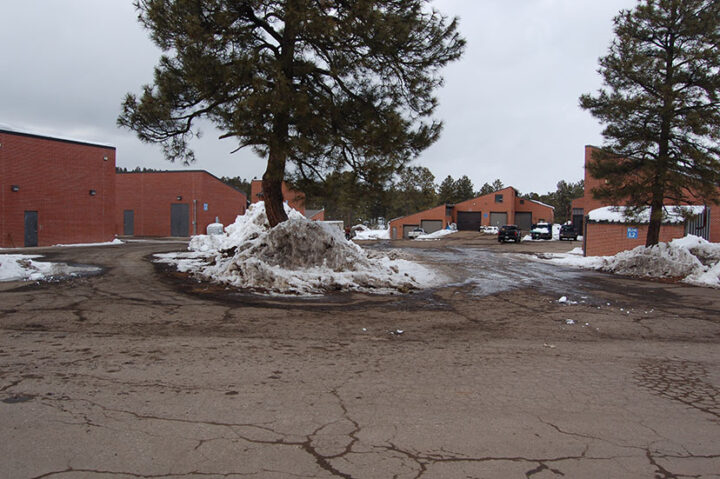“The river has a gun to everybody’s heads, and it’s in everybody’s interest to try to work out this thing…”
— JB Hamby, board member, Imperial Valley Irrigation District, quoted by reporter Dan Charles in “Meet the California farmers awash in Colorado River water, even in a drought” posted to NPR.org, October 2022.
We received a press release from U.S. Senator John Hickenlooper’s office on Tuesday, expressing the Senator’s delight over an announcement that six of the seven states served by the Colorado River had come to some kind of agreement regarding the declining reservoir levels in Lake Mead and Lake Powell, and other Colorado River reservoirs. The Senator is quoted:
“All of us in the Colorado River Basin are experiencing long term drought and aridification. The framework offered today by Colorado and five other states is a productive step forward. Ultimately, any solution needs to be collaborative and inclusive to cope with less water from the river we all rely on.”
In response to the Bureau of Reclamation’s request for a state-led framework as it evaluates potential revisions to operations at Hoover Dam and Glen Canyon Dam, the states of Colorado, Arizona, New Mexico, Nevada, Utah, and Wyoming submitted a proposal to the federal Bureau of Reclamation.
You can download the so-called Consensus-Based Modeling Alternative, here.
The Interior Department had asked the seven states to submit plans — by Tuesday — to voluntarily reduce water usage by 2 to 4 million acre-feet. 4 million acre-feet would amount to about one-third of the river’s annual average flow.
But the largest Colorado River user, California, did not join them, indicating that the wrangling will continue. For months? For years?
Without California’s participation, we have to wonder what value this six-state ‘agreement’ has.
“Obviously, it’s not going swimmingly,” said Jeffrey Kightlinger, the former general manager of the Metropolitan Water District of Southern California.
Meanwhile, down in the southern part of Colorado, a small town on the San Juan River — a tributary of the Colorado River — is looking at trying to meet wastewater regulations promulgated by the Colorado Department of Public Health and Environment (CDPHE). A presentation to the Pagosa Area Water and Sanitation District (PAWSD) board, earlier this week, suggested that the cost of meeting those regulations might run $50 million. And this is merely for ‘upgrades’ to a wastewater treatment plant that is slowly approaching its capacity and will ultimately need to be expanded.
Disclosure: I currently serve on the PAWSD Board of Directors, but this editorial series reflects only my personal opinions, and not necessarily the opinions of the PAWSD Board as a whole.
What would it cost the average household in the PAWSD district, to pay for this upgrade to the Vista plant? And then, an expansion, a few years later?

PAWSD has about 3,500 sewer taps, according to Tetra Tech. Looking at my pocket calculator… if we never added another tap, the cost to each household or business for a $50 million upgrade comes to $14,300. Spread that out over a 20-year loan, and it calculates out to about $700 a year… not including interest payments on the loan.
About $60 a month, for the privilege of flushing our toilets, and running our washing machines into the same sewer system.
Add that $60 on top of the existing PAWSD wastewater fee of $32 a month, and PAWSD customers would be approaching $100 a month for wastewater fees. (Within the Town limits, the fee would be more than $100 a month, due to the Town’s higher existing fee.)
Unless we had a technological revolution?
For example… what if the entire community went back to using outhouses?
LOL. Not going to happen.
But something else rather revolutionary could happen.
Like, for example, composting toilets. Dry toilets. Waterless toilets.
Enter, stage left, the latest technology.
The basic problem with our current wastewater system is we use gallons of water to flush our toilets, and those gallons of water — about 1 million gallons per day here in Archuleta County… now tainted with ammonia, nitrates, phosphorus, and various other problematic chemicals — are harmful to the environment. Maybe not as harmful as outhouses would be, but still harmful, to the tune of $50 million. (In the opinion of CDPHE. And who are we to question their expertise?)
Because our current method of handling wastewater, the water from our washing machines, dishwashers, showers and baths — up to 80% of indoor water use — goes into the same sewer pipes as our solid wastes, and becomes tainted, and therefore needs to be run through the same treatment processes.
But if we didn’t flush our solid wastes at all…
…if we all had composting toilets… and a gray water system…
…how different our future might look. How different the environmental impacts might be.
If we didn’t add water to our solid waste… well, we’d save water… and we’d save on water treatment. And the resulting compost could be used as a fertilizer, instead of winding up in our struggling County landfill.
The Nature’s Head unit, displayed above, costs about $1,000, with a 5-year warranty. To put that number into a context… PAWSD will potentially be upgrading its Vista plant at a cost of maybe $14,300 per customer household. (A household outside the PAWSD district that installs a septic system will pay $20,000 to $30,000 or more, and then needs to have the system pumped at regular intervals.)
To add insult to injury, here in downtown Pagosa where I live, I currently pay $54 a month to have my wastewater pumped uphill to the Vista plant. That’s $648 a year.
But all these environmental and financial benefits — saving water, saving money, free fertilizer, less nitrogen and phosphorus in our rivers and streams — are illegal, according to the experts who have designed our Colorado wastewater policies. Because these policies are built upon, and support, wasteful and expensive wastewater systems that essentially date back to 1866, the technology of composting toilets is being developed without government support and backing. That is to say, slowly.
Instead of saving water and money, and the environment, Colorado policy-makers would have us build more water storage reservoirs…
Such as the 11,000 acre-foot reservoir being proposed by the San Juan Water Conservancy District for the Dry Gulch valley…
…in a state suffering from a dual water crisis. Lack of clean water. Too much dirty water.

